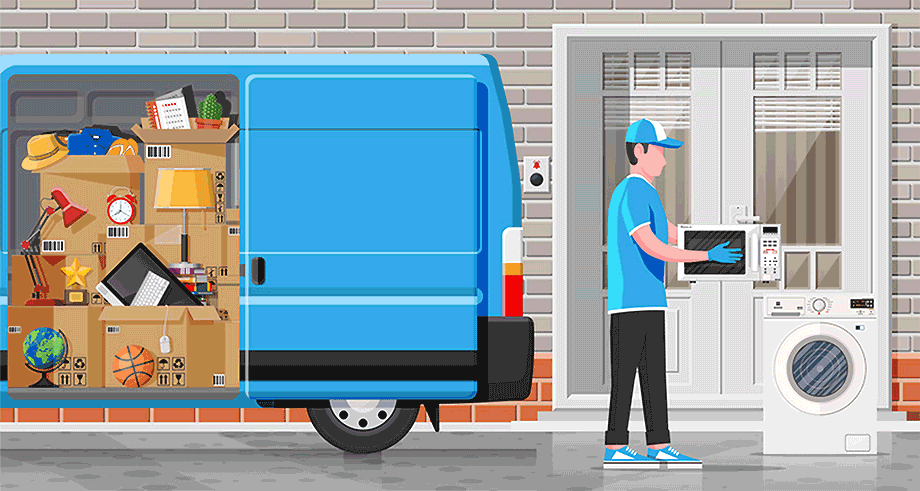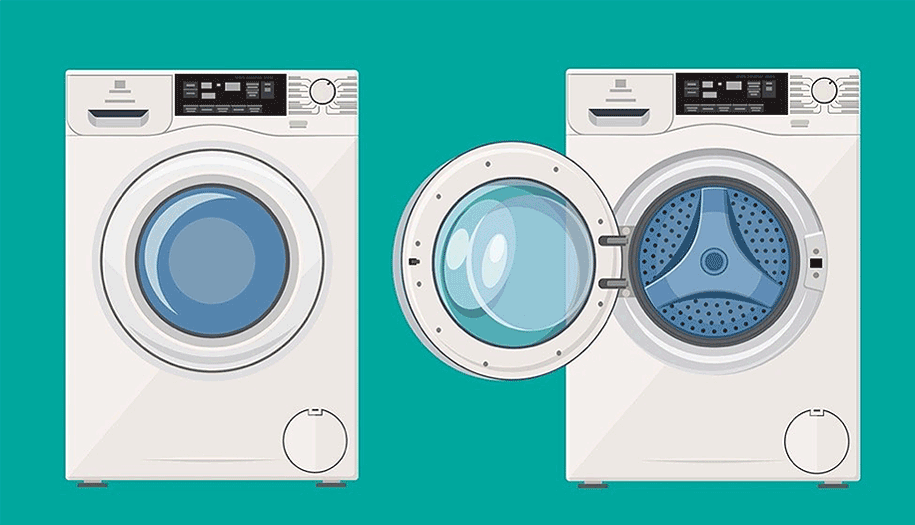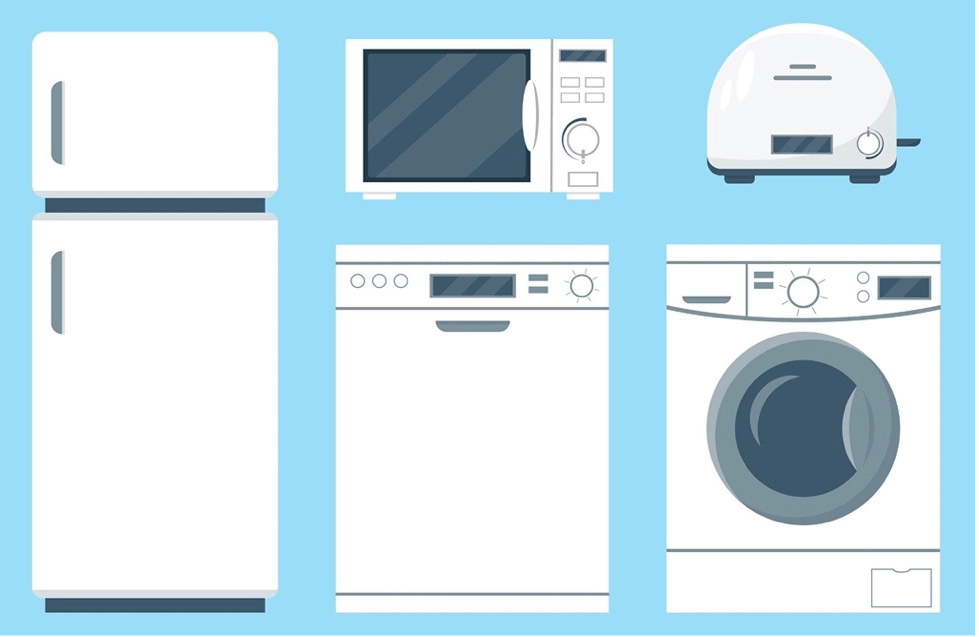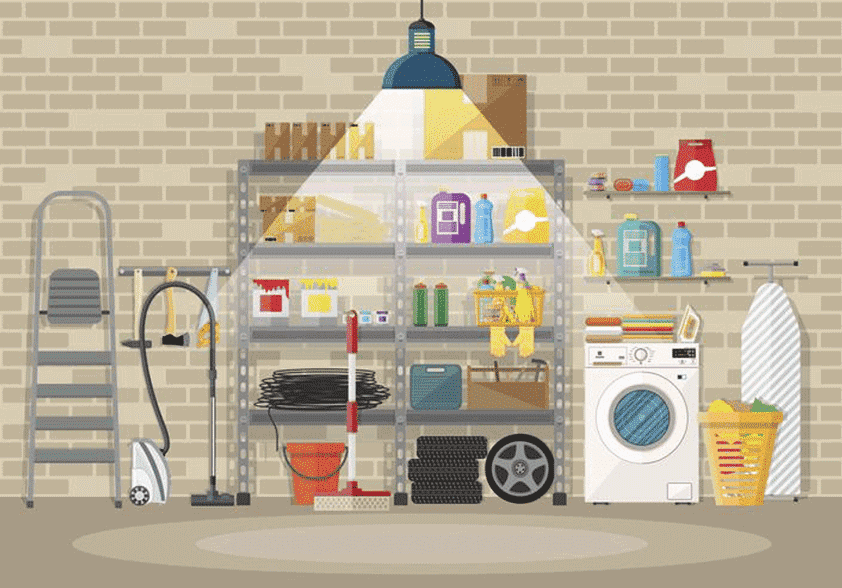How to Store Washers, Dryers, and Other Appliances

As you accumulate more possessions throughout your life, often moving feels less like an exciting new chapter and more like an endless game of juggling clothes, cookware, and other items. Though you may be able to give away old sweaters or sell unused electronics beforehand, major appliances such as refrigerators and washing machines are a different story. The idea of leaving behind these bulky belongings is tempting, but abandoning appliances isn’t always an option if your new home doesn’t include them. Plus, constantly replacing appliances gets expensive.
If you’re ready to move and need or want to bring your appliances with you, it’s essential to store them correctly until they reach their new home. Learn how to prep washers, dryers, and other appliances for long-term storage with National Storage.
Create a Game Plan Before You Store Your Appliances
Like any aspect of a move, you need to create a game plan to help you stay efficient, on-task, and calm. Whether you’re moving and storing all of your appliances or just a few, start by making a list of items to visualize the project better. Measure your doors, stairways, and the fridge itself, too! You don’t want to carry a refrigerator, only to find out it won’t fit through your door.
You should also know how long you can wait to prep your appliances for storage. For example, figure out if you can use a nearby laundromat for a few weeks while you move or stock up on paper plates to avoid dirtying dishes.
Make sure you also know how many people you might need to help you move and how you’ll transport your items to storage. Finally, as you prepare for your move overall, you should consider using a moving checklist to stay organized.
Start Fresh: Clean and Prep Your Appliance
Once you’ve created your game plan for moving your refrigerator, dishwasher, or even your air conditioning unit, it’s time to tidy up. If you store appliances when they’re unclean, you can expect them to be just as dirty (or even more so) after taking them out of storage. So the best thing you can do for your appliances’ sake is properly clean and prepare them for storage.
No matter if you’re deep-cleaning your washing machine and dryer or wiping out your microwave, you should be mindful of the type of cleaning products you use to get the job done. If you’re cleaning appliances that directly touch your food or dishes, such as a refrigerator or dishwasher, use vinegar, baking soda, and other non-toxic solutions.
After you’ve scrubbed, wiped, rinsed, or scraped your appliances squeaky clean, remember to give them time to air out and dry. All of your hard work could go to waste if moisture in your fridge or washing machine becomes a breeding ground for mold or mildew in storage.
Keep Everything Taped Shut for Moving
Following a thorough cleaning and drying of your appliances, it’s time to get them ready for the move. First, be sure to tape their doors shut to prevent them from swinging open and causing damage to your moving vehicle (or you) as they make their way to their new home.
However, when your appliances reach their storage destination, make sure to remove the tape and prop open all the doors. Even if they’ve been properly cleaned and dried, leaving them open ensures mold doesn’t get a chance to grow inside.
Washer and Dryer Storage Tips

For their longevity, it’s essential to know how to properly maintain and store washers and dryers. It’s also crucial to reference your machine’s manufacturer’s manual before moving a washer or dryer, as different models will have specific instructions for the best way to transport and store them.
How to Store a Washing Machine
At least a few days before moving your washer, run a rinse cycle to flush out any residual detergent. Next, try running a water and vinegar solution through another rinse cycle if that doesn’t quite do the trick. Then, thoroughly let your washing machine dry before you place it into storage. In addition, be sure to detach any removable parts such as hoses. To avoid trapping moisture inside, leave washer doors open during storage, and consider covering your appliance with a light sheet or blanket to help keep them clean.
How to Store a Dryer
First, remove as much lint and debris as possible from your dryer. Next, remove any parts that can be detached (like the lint-catcher), then wash them with a solution of soap and water. To keep the dryer clean and moisture-free in storage, you may want to place a light fabric—not plastic—covering over your appliance. Lastly, leave its doors open to prevent moisture buildup from forming mold, mildew, or rust.
Storage Tips for Small Appliances
Your microwave, pressure cooker, or air fryer might be small, but take your time when prepping them for storage. Like refrigerators and other large appliances, they can become smelly, unusable pieces of equipment without regular cleaning and proper storage.
Using non-toxic cleaning solutions, such as the water-vinegar mixture, wipe out your small kitchen appliances. You should also scrape off any dried-on food or pour out crumbs to prevent mice and other pests from treating your belongings like their personal kitchen.
In addition, if your appliances have internal, removable parts (such as a microwave plate), remove and clean them as well before wrapping them up for storage.
It might seem like common sense, but it’s easy to forget to take care of these delicate components in the chaos of moving. Save yourself the money from having to replace broken parts—pack them all beforehand.
Can I store my air conditioner?
Yes! To store an air conditioner unit, replace its filter with a fresh one, wipe it down with soapy water, and dry it thoroughly. It would be best to store it standing up, as leaving it on its side can cause internal damage to its parts.
How to Handle Large Kitchen Appliance Storage

How to Store Dishwashers
When cleaning your dishwasher for storage, vinegar is your best friend. Pour vinegar into a dishwasher-safe cup, place it in the top rack, and run your dishwasher at its hottest temperature. As the vinegar swirls around, it will sanitize and break down soap scum or food debris.
After your dishwasher is squeaky clean, make sure it’s adequately drained. Clean, drain and empty the dishwasher. You’ll want to disconnect the following before moving your dishwasher:
- The main power supply
- Water supply
- Drainage pipes
Next, unscrew the fasteners anchoring the dishwasher to its space in the kitchen and remove it. Remember to wrap or tape loose cables to the dishwasher before you start moving it out!
How to Store Refrigerators
Your first step when moving your fridge is to empty all its contents, either eat or throw away or donate if unopened. Then, defrost the refrigerator for 24 hours. Finally, place towels around it to soak up any water that melts and seeps out.
As you clean, use food-safe cleaning solutions. For example, mix water and vinegar in equal parts, and then pour your cleaning concoction into a spray bottle. Now you’re got a way to safely clean and deodorize your fridge. When your fridge is clean and dry, remove any drawers or shelves that you can to minimize damage during your move.
When moving the refrigerator, use a dolly, or get as many helping hands as you can. Not only is a refrigerator expensive to repair if dropped or tipped over during your move, but it could also cause serious injury to you or those around you.
Can I store a refrigerator on its side?
Always store a refrigerator standing up—never on its side. Leaving your refrigerator on its side can lead to a bevy of issues. For example, the compressor’s oil might leak and clog other parts. Also, the fridge weight may crush internal mechanisms or crack interior glass shelves. Storing your refrigerator on its side or back is never a good idea—research your refrigerator’s manufacturer for moving and storage recommendations.
How to Store Ovens
When cleaning your oven for a move, you can use a homemade paste made of 1/2 cup of baking soda and a few tablespoons of water. Remove your oven racks, coat them with the paste, and let them rest for a day before scrubbing them clean.
Coat its interior with the same baking soda paste for the oven itself and let the concoction stay on for at least 12 hours before spraying it down with vinegar and wiping it clean. Then, let it air dry or crank up the heat to burn up any moisture.
If your oven has a self-cleaning feature, you can save yourself time and effort by using that instead. Remove your oven racks beforehand, however, as the self-cleaning feature can cause discoloration on their metal surfaces.
Now that your oven is clean, be sure to protect it for the move by securing its door with cables and wrapping it up in bubble wrap or blanket to keep it from getting dented or chipped during the movement.
Common Mistakes When Storing Appliances
Not Labeling Parts
Do your post-move self a favor: Keep screws, fasteners, and other parts in labeled boxes or bags. There’s nothing worse than finishing up your move only to find you can’t find the details to reassemble your appliances. Tape these bags to or inside your devices for easy access.
Not Staying Organized
Staying organized takes more time and effort during a move, but it’s worth it. If you throw parts, manuals, and other appliance-related items into boxes willy-nilly, you can quickly lose track of them. Instead, be deliberate about where you pack any pieces that your appliances need.
Choosing the Wrong Storage Environment
From microwaves to dishwashers, your appliances are hardworking pieces of equipment. However, even the toughest appliance is susceptible to mold and rust if stored in non-climate controlled areas, such as a garage, shed, or basement.
Find the Unit Fit for Your Appliance Storage Needs

Whether you’re storing a few appliances or all of them, you deserve a storage solution designed with your needs in mind. At National Storage, we’re proud to offer a wide selection of storage unit sizes and features to make your Ohio or Michigan move easier. Keep your appliances in one of our climate-controlled storage units for a stable storage environment. Not sure how long you’ll need storage? Not a problem. Our month-to-month leases help keep self storage flexible and affordable. For convenient appliance storage, find a self storage facility near you today. Also, don’t forget to check out our blog or storage guide for more helpful tips!